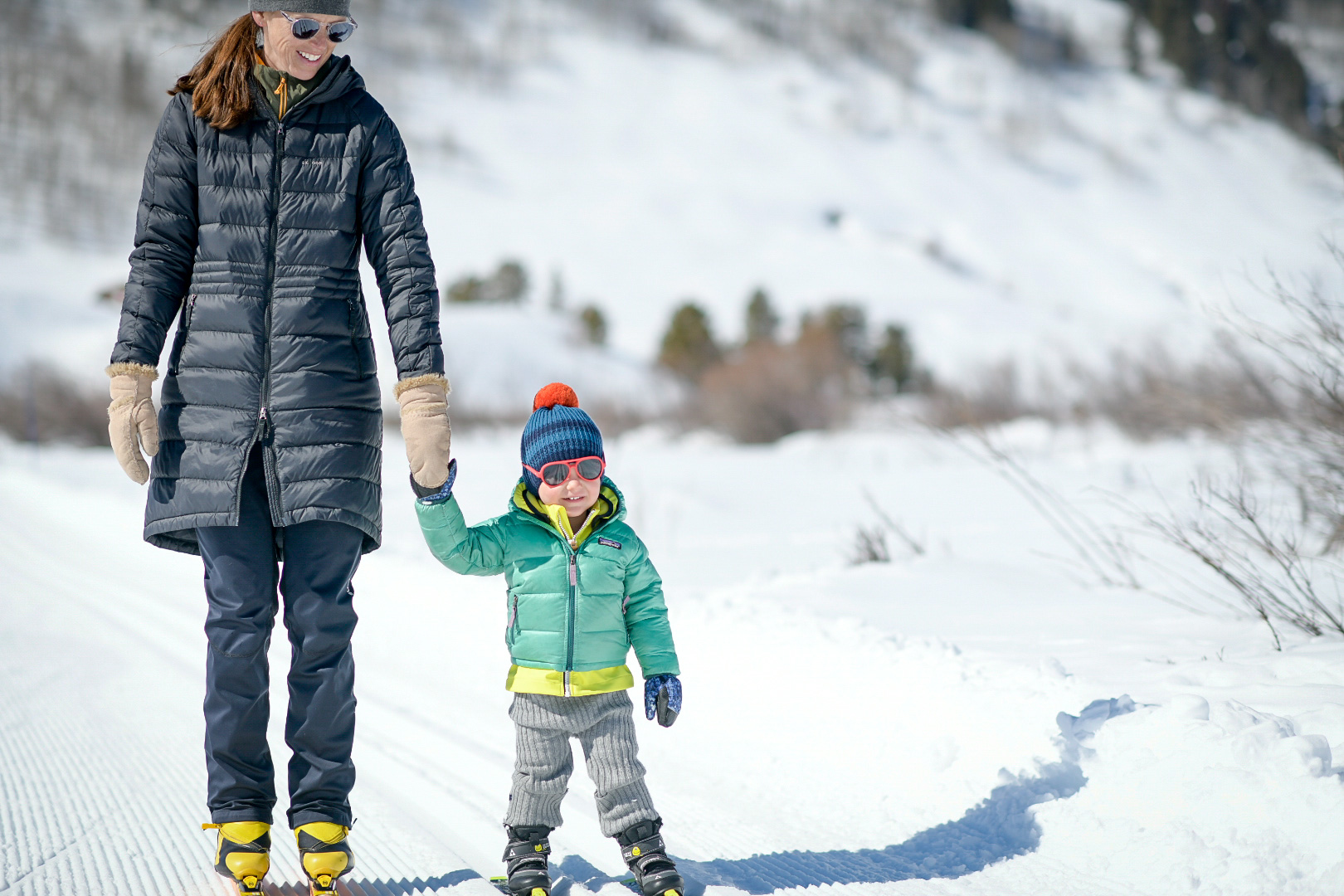
Intro
Most of our reviews are pretty long — and take a long time to produce — because we want to provide enough info for you to actually determine whether the gear we tested will work well for you.
But we get asked to check out an increasingly wide range of products, and sometimes, we just want to tell you about something we’ve been using and loving lately.
So we’ve rolled out this monthly series — Stuff We Like — to keep you current on a broad range of stuff we’re currently digging.
And if there’s something you love that you think we ought to check out, drop us a note in the comment section below.
LifeStraw Go Stainless Steel & LifeStraw Home
MSRP: Varies
Kristin Sinnott: My family and I relocated in 2021 and we went from city water to well water. I didn’t think much about it because (1) I grew up on well water and I never had any issues with it and (2) we have a pretty robust water filtration system at our new home. But unlike the well where I grew up, the well at our house is artesian, open to the air, and everything, including wild and domestic animals, has access to it. We have tested the water on multiple occasions and everything always comes back fine but when we learned that none of our neighbors (who are all on the same shared well) drink the water, I began to second guess our decision to drink it.

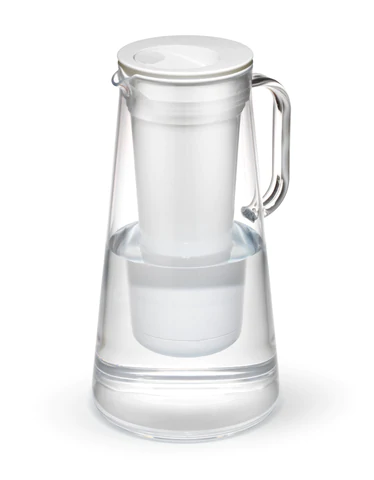
This was a problem because I drink a lot of water and our house is small enough that a water cooler wasn’t an option. My temporary solution: La Croix. In the past year, I don’t want to even think about how many cans of La Croix I went through. I like La Croix so it didn’t seem like too big of a deal until our county (Taos, NM) stopped recycling, and then the reality of the waste I was producing really set in. At that point, I knew we had to come up with a better solution for our drinking water. Thankfully, LifeStraw had an option.
I’ve had the original LifeStraw filtration system for quite a while and have used it on hikes and for travel. So when I saw that life straw made a water bottle and a carafe with the same filtration system, I knew I had to try them. If I felt safe drinking water out of the straw in random water holes while out hiking, I knew I’d feel safe using it in my home. LifeStraw says the home filtration system:
“Protects against over 30 contaminants including bacteria, parasites, microplastics, lead, mercury, and chemicals including PFAS, chlorine, organic chemical matter (pesticides and herbicides), dirt, sand, and cloudiness; improves taste. Click here for a full list of all contaminants removed.”
We’ve been using the pitcher and water bottle for five months and have enjoyed the taste of our water so much more since we started using both products. I haven’t purchased any cans of water in weeks and I don’t plan to. The jug is tall and doesn’t fit under our faucet but it’s easy to fill using the extendable faucet head. It does take longer than a Brita filter for the water to filter through, but I’ll gladly wait for the peace of mind it provides my family and me.
Initially, the water bottle had a bit of a taste to it, but after a few cycles through, the taste has disappeared. I’ve used the water bottle at home and while traveling. I was happy to put it to the test at one local airport with water that always has the worst chlorine taste to it. The water bottle eliminated the chemical taste. The filters last approximately two months and LifeStraw has a subscription program where they’ll send you a new filter accordingly.
LifeStraw is also a Certified B Corporation that gives; for every product purchased, safe drinking water is provided for an entire year to a child in need. LifeStraw also does humanitarian and emergency response work around the world. If you’re looking for a new water filtration system — for travel, backpacking, hiking, or home — take a look at LifeStraw.
Corbeaux Cloud 9 Dress
MSRP: Currently on sale for $76
Kara Williard: Easily the best après garment and versatile enough to be a whole lot more, the Corbeaux Cloud 9 Dress has become my favorite thing I own this winter. It’s the easiest piece to throw over my base layers and it feels as cozy as my favorite baselayers, but looks a lot more presentable for any errand or night out. The Cloud 9 is built from Corbeaux’s COUNTOURWeight fabric, which is a gridded, soft fleece material made from recycled polyester and virgin polyester. It’s a good weight to feel warm next to the skin, but it’s not too heavy and it breathes quite well when I am being more active in it.
I have washed it and worn it a lot this season, and it has proved pretty durable and fairly snag resistant. It is always the piece I am grabbing when I just don’t know what to throw over my leggings. I am not sure what I used to wear before I got the Cloud 9, but it has served as the most versatile piece I own, and I am sure I will be investing in another quite soon. I am typically a medium in Corbeaux and a medium in the Cloud 9 Dress has been a great length to help me feel well-covered, and it feels flattering and comfortable, even when I am wearing a layer beneath.

Muck Boots Men’s Arctic Ice Agat Tall
MSRP: $210
Size Tested: 10 (my typical street shoe / running shoe is a size 10.5)
Jonathan Ellsworth: Like most mountain towns, Crested Butte can become a pretty icy — and snowy — place. So this season, I decided to finally try to figure out which boots out there provided the best traction for (1) walking around on ice and (2) walking through — or shoveling — really deep snow. And having used two different pairs of Muck Boots this season, I’m ready to weigh in.
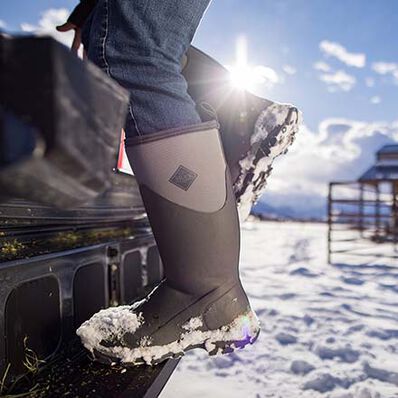
First, let’s talk about the Muck Boots Arctic Ice Agat Tall. For shoveling my driveway out from under very deep snow, I can’t really imagine there being a better product than these. (Perhaps similarly good, but I can’t imagine better.) For being such a tall boot, I find them to be “quite” easy to put on and take off — let’s call it a 4 out of 5 (see my next Muck review below). And part of what I think Muck gets right here is offering the right amount of stretch and stiffness at the upper, so that you can shove your foot and pant leg into the boot easily, but the “stretch-fit” top does an admirable job of snugging up sufficiently to keep snow out when you’re post-holing through snow.
(FWIW, Muck says this boot has an “estimated max calf circumference: 41cm/ 16.1in” — so if you have an extremely narrow or particularly large calf, you might want to pull out the tape measure. But the size of the opening and stretchy material works very well for me.)
I’m open to trying other products in this category, but so far, I feel like I could happily get many years of use out of these boots in deep snow.
That said, if you’re looking to do a lot of walking in the winter and want to get something a bit more versatile, check out my next selection.
Luke Koppa: I stole these boots for about a week and agree with what Jonathan has said. Before trying the Arctic Ice Agat Tall, I had used my roommate’s Mucks, the classic “Chore Classic Tall.” It took me five minutes to love the easy on / off of these boots, and their excellent coverage. That said, I was particularly curious about the Arctic Ice Agat’s Vibram Arctic Grip sole, since I’d seen some impressive demonstrations of its grip, but had yet to try it for myself. In short, it’s the grippiest rubber I’ve ever used on straight-up ice. It’s definitely not a replacement for metal spikes — particularly when you’ve got a dusting of snow over a sheet of ice, where Arctic Grip can’t really get much purchase. But on the uncovered ice patches that are common on my walk to Blister HQ, the Arctic Grip pods on this Muck Boot’s sole gave me far surer footing than any other rubber-soled boot I’ve used. Unfortunately, that didn’t keep me from doing a cartoon-esque backslap while trying to walk down what would be best described as a “double fall line” driveway that was covered in ice… but they’ve been fantastic walking up and down the sidewalk that makes up my commute.
Muck Boots Men’s Arctic Outpost Lace Arctic Grip
MSRP: $200
Size Tested: 10 (my typical street shoe / running shoe is a size 10.5)
Jonathan Ellsworth: When I’m shoveling or walking through very deep snow, the Muck Boots Arctic Ice Agat Tall is the right tool for the job. But for everything else — heading into town on cold, icy, and or snowy days; walking to Blister HQ everyday in the winter; etc., the Arctic Outpost Lace with Vibram’s “Arctic Grip” sole has become my daily driver — er, daily walker.

First, regarding its traction, Luke Koppa (who has also used these two Muck boots this year) and I have proven that Arctic Grip will not magically prevent you from slipping on ice if you are walking along steep, off-camber pavement (I regret that I was not present to witness Luke attempt at this and then yard-sale with his freshly purchased 12-pack of beer), or if you try the equally stupid thing — that I often do — which is to start striding out too wide and heal striking on steep-ish, icy, downhill sidewalks while scheming up new things we could do at Blister. I.e., for other daydreamers and dumb people like me, don’t blame your boots if you start walking too fast and striding too large and heel-striking your way on ice downhill. It doesn’t tend to end well.
All that said, the traction on these boots is better than all the other boots I own, except for the other Muck boots I’ve reviewed here. And I can’t yet say which is definitively better between the two. What I can say is that, between the two, the shorter cuff on the Outpost makes these more comfortable for 10-15 minute walks (or longer).
The other thing I love (either because I’m lazy or I’m busy), is that I typically leave these tied loosely, not tightly, and they function extremely well as a slip-on / slip-off. (If the Arctic Agat Tall is a 4 out of 5, the Outpost Lace is a 5 out of 5 in terms of easy on, easy off.)
That said, if you will be post-holing around in deeper snow, I can tighten these up quite a bit and ward off snow pushing into the boot. (I also have not found my heels to slip around in the boot on my daily walks to and from Blister HQ, even with them loosely laced up.) It’s a roomy fit, but it has caused no hotspots or blisters on my heels. And speaking of fit, I wear a size 10.5 street shoe and running shoe, but normally drop down (to a size 10) when shoes or boots are not offered in half sizes. I went with a size 10 in the Outpost — and the Arctic Agat Tall — and size 10 is great for me.
I’ve been using these two boots since the beginning of 2022, and I really like both products. Inventory on Muck’s website is currently low for both boots, but I would set yourself a reminder to pick these up next fall before the snow starts to fly.
mountainFLOW Quick Wax
MSRP: $15.95
Kara Williard: It is warming up quickly out there, which means the skis are feeling pretty slow and sticky at times. While a lot of our reviewers at Blister really enjoy utilizing mountainFLOW’s All-Temperature wax, sometimes we don’t have enough time to give our skis a full wax. A full wax and scrape is a better option that will last longer, but if you need a quick fix, I have been impressed by the short-term solution of mountainFLOW’s Quick Wax.

The wax is easy to apply and I have felt it makes a significant difference on the glide and consistency of my skis on snow of variable temps for as much as an entire ski day, and it certainly helps keep my bases from becoming overly dried out in the intermediary between wax applications. I think for anyone who finds themselves feeling a lack of glide or just a little inconsistent in the way their skis are reacting to the snow, mountainFLOW’s Quick Wax solution makes a noticeable difference and it doesn’t require as much preparation or time as a full wax. That said, I highly recommend taking the time to give your skis the love they deserve, which comes in the form of a full wax, which I speak more about below, since I also have been using mountainFLOW’s All-Temperature wax this season, too.
Lodge Cast Iron
MSRP: $17.95 (8” skillet)
Kara Williard: Since we are apparently reviewing cookware these days, as you may have heard on Ep. 187 of GEAR:30, it is now my turn to chime in since I know that I cook a whole lot more than Jonathan, and I have formulated my preference of cast irons over the better part of a decade. These days, I utilize a large dutch oven, an 8” cast iron skillet, and a 12” cast iron skillet to cook and bake nearly everything. I really appreciate that a cast iron pan is a lifetime investment, and if anything, just gets better over time. I actually started using cast iron cookware when I was over a decade into vegetarianism, had developed bad anemia, and figured I could use all the iron I could get. But it quickly evolved into the only type of cookware I want to use since it is easy to prep and clean, and highly versatile in terms of cooking pretty much everything well, including getting the right sear on vegetables or meat, baking dishes from cakes to frittatas, and seasoning your food.
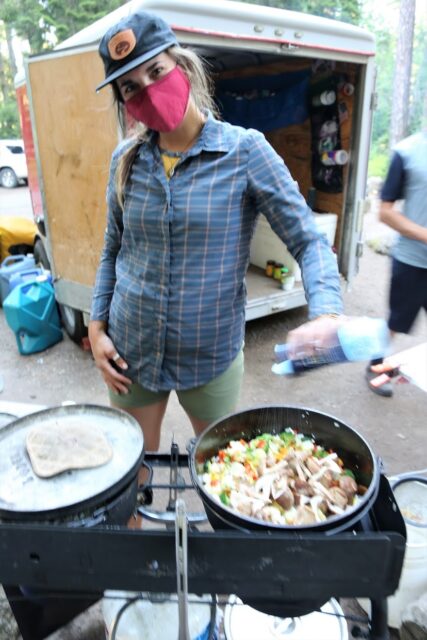
In my opinion, there is no better non-stick pan than a well-cared-for cast iron, and I find the process of caring for cast irons to be exceptionally easy. All it takes is hot water, a wire scrubber such as a Chore Boy, and a tablespoon of oil. So long as you are not letting your cast iron pan become dry from a lack of oil, it will remain a nonstick pan capable of cooking and baking anything. I also spent several summers on the road guiding for Western Spirit, and as guides, we are diehard about our cast iron pans since we provide three, awesome meals a day for as many as 14 guests; all of the meals are cooked in some well-loved cast iron. Seriously, if you are on a budget or you just want to invest in a singular pan to do absolutely everything, cast iron (with a lid) is the best way to go, in my opinion.
Ride Concepts Tallac Clip
MSRP: $180
David Golay: The Tallac is a new shoe from Ride Concepts, and while we’ll have a full review in a bit once I’ve been able to spend some more time in them, after a handful of rides, I’m quite impressed.
The Tallac is meant to be an all-around mountain bike shoe — burlier and more protective than super light XC options, but lighter, more breathable, and lower-profile than full DH options. It’s available in both clip and flat pedal versions, with either lace or BOA closures, and I’ve been trying the lace-up clip version.
The fit is excellent, at least on my feet — which feature a moderately wide forefoot and midfoot, but comparatively narrow heel. The heel pocket could maybe be a tiny bit tighter for me, personally, but I haven’t had any issues with heel lift or chaffing so far. Overall, I’d call the Tallac about average for overall width and volume, and that’s working well for me.
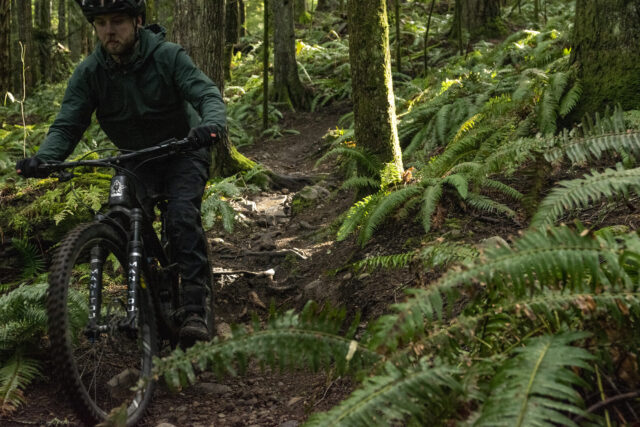
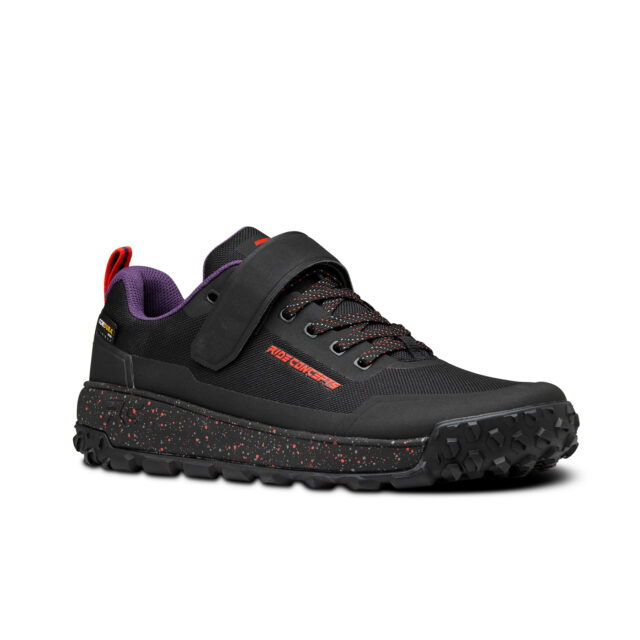
The outsole, especially in the toe and heel, has a particularly aggressive tread pattern, and the Tallac has been great for scrambling around in looser, softer dirt. And while the sole is pretty stiff through the middle of the shoe, it softens up a lot through the toe box (without feeling like there’s a major hinge point), which really helps improve the walkability, without resulting in a shoe that feels overly soft on the bike. The Tallac definitely isn’t as stiff as most XC-focused shoes, but it’s definitely more so than the Shimano AM9, and pretty similar to the Specialized 2FO DH.
The other really standout feature of the Tallac is that it’s got a much longer, more rearward cleat slot than any other shoe that I’ve tried to date — something that I’ve been calling for quite a while now. The only hiccough that I’ve run into so far is that the cleat slot is also substantially deeper than most shoes, which caused some issues with interference between the sole and the pedal body when I first tried the Tallac with an HT X2 SX pedal. Some slight shimming of the cleat (using the shims that come with the X2 SX pedals) and removing a few of the traction pins got that sorted, but it took a little fiddling. I haven’t tried the Tallac with any other pedals yet, but I’ll try a few more options and report back in the full review.
So far, the Tallac Clip is shaping up to be a really nice Trail / Enduro shoe, and we’ll have a more detailed report in a full review to come. And we’re planning on testing the BOA / flat pedal version when they’re available in a few months, too.
mountainFLOW All-Temp Hot Wax
MSRP: $19.95
Kara Williard: I worked in ski shops for nearly ten years and have certainly breathed way too much fluorochemical ski wax. While I could always attest to the performance, I knew some of the materials were troublesome, especially when considering the impact on watersheds. Simultaneously, I have been trying to be more diligent about waxing my personal skis, and especially the skis I take into the backcountry, since it can be pretty variable out there and I want to be able to rely on my gear.

All that said, I have used mountainFLOW’s All-Temp Hot Wax many times this season. I prefer the All-Temp since there is a lot of day-to-day temperature variability in Colorado. I also have learned that a little wax goes a long way, in applying. One thin coat evenly spread on the skis, thoroughly soaked and cooled, and then scraped, makes a huge difference for several days at a time. I appreciate that this wax smells like honey rather than chemicals, and that I know I am applying a fully plant-based and biodegradable substance to my skis, which is essentially shedding constantly into the snow. Any struggles around scraping the wax, I found, were alleviated by just having a really sharp scraper, but I also noticed the difference in the new recipe from this year to last (we’ve been able to try both versions), which has made it a lot easier to scrape the wax. Aside from that, I have really enjoyed the performance of the All-Temp version, since I have noticed that it does work well across almost all snow temperatures. Even though we ski a lot of different skis here at Blister, my favorite skis and the ones I go to when I need some consistency have all been waxed with mountainFLOW All-Temp Hot Wax this season, and I have found it makes a difference for three days at a time. Next season, I hope to play around a bit more with the different temperature compositions, but in the meantime, I will continue to rely on the All-Temp to make that difference.
mountainFLOW Moly Hot Wax
MSRP: $23.95
Dylan Wood: Almost all of what Kara said above is applicable to my experience with mountainFLOW’s All-Temperature Moly (short for Molybdenum) wax, but I also wanted to add a few things.
While I’ve also found mountainFLOW’s All-Temp wax to be ideal for almost every day out in Colorado, an all-temperature wax is especially convenient for spring here. One day it will be 25º and chalky, and the next it’ll be 45º and slushy. mountainFLOW claims “Our eco-friendly Moly wax is clutch for those snow conditions where nothing else seems to work,” which is a pretty big claim and got me interested in their Moly wax.
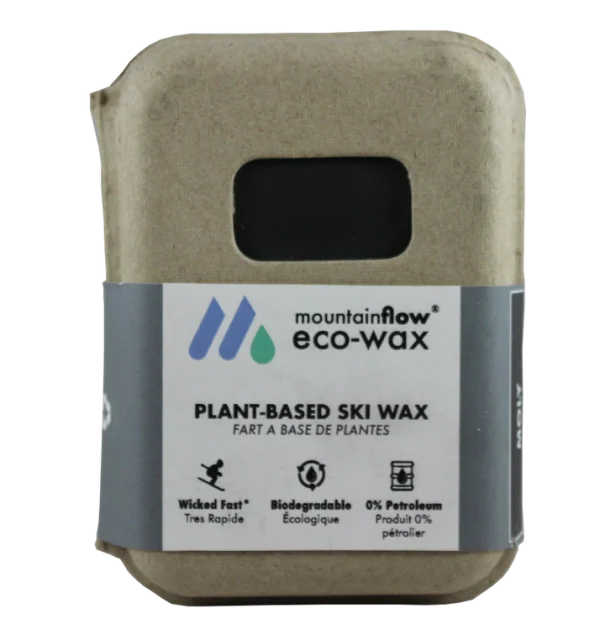
Moly waxes are supposed to be both beneficial for cold, dry snow (where static friction allegedly tends to build up) as well as warm, dirty snow. And well, this spring we’ve definitely had both of those snow conditions, and oftentimes in the same day. I found mountainFLOW’s Moly wax to have consistent and reliable glide all over the mountain, from the wind-blown snow off the High Lift to the turning-more-brown-every-day snow near the base of the Silver Queen lift. mountainFLOW also claims that their Moly wax protects against dirt and debris affecting the bases of your skis, which is very reassuring when skiing some questionably-close-to-dirt spring lines.
If you have been slacking on waxing your skis, spring is the time to do it. In the spring, you might be in soft, slushy, 30º snow in one turn, then hard, icy, 15º snow the next, so predictable glide in both of these snow types is very important to have. We will be transitioning to their “warm” wax soon as Mount CB begins to warm up, and it will be interesting to compare that to their All-Temperature wax that we’ve been using most. mountainFLOW is clearly the choice for eco-conscious waxers, but I think that just about everyone who uses hot wax ought to be interested in MountainFlow’s products, regardless of how much you care about not leaving petroleum behind everywhere you ski.
Avocado Silk Pillowcase
MSRP: $59
Kristin Sinnott: When Jonathan told me he was going to test an Avocado Silk Pillowcase, I was pretty envious. Don’t get me wrong, I was pretty happy with my then-favorite pillowcase (the Zenbivy Motobed pillowcase which I included in our holiday gift guide) but a silk pillowcase sounded a bit more luxurious and I liked the idea of keeping my camp pillowcase with the coordinating sleeping bag. And Jonathan liked the idea of someone who doesn’t shave their head testing the pillowcase.
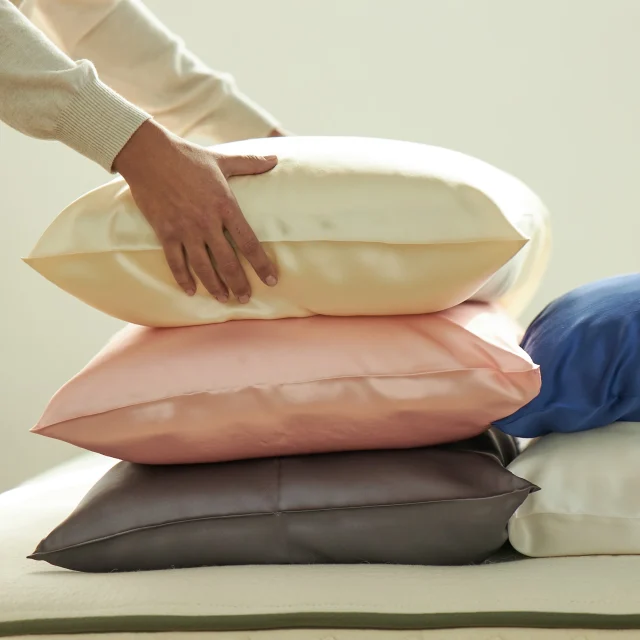
The Avocado Silk Pillowcase is made using 100% pure 22-Momme Mulberry silk. And in case you are unfamiliar with silk ratings and types … the density of silk is measured in momme, and the higher the count, the better the silk. Silk sheets are typically between 19 and 22 momme, and 22 momme is considered to be of excellent quality with a long lifespan.
Mulberry Silk is considered to be of the highest quality and is produced from the mulberry silkworm Bombyx mori. It is reportedly considered to be the strongest and smoothest type of silk in the world.
But before I knew any of this, I knew that I loved sleeping on the Avocado Silk Pillowcase. I tend to toss and turn a bit while sleeping, and my cotton pillowcases would be strewn with strands of my hair every morning. I’ve never found a strand of hair on my Silk Pillowcase and that in itself was cause for celebration because I was always worried that my hair was thinning when I’d wake up to a pillowcase with strands of hair all over it.
[Jonathan Ellsworth: In the comment section of our group Google doc, Luke Koppa highlighted Kristin’s statement, “I’ve never found a strand of hair on my Silk Pillowcase,” and commented, “Crap. I may need to get one of these, too”. We gotta get some more Silk Pillowcases and save Sexy Luke’s hair!]
Silk pillowcases create a lot less friction, so strands of hair aren’t snagged by the fabric. And of course, they are extremely soft and smooth, which is what really attracted me to the pillowcase.
(Jonathan: And in addition to “soft” and “smooth,” I would add, “cool” — I don’t have the problem of any pillowcase ripping out my hair, but sleeping “hot” can be disruptive to good sleep, and this pillowcase feels cooler to me than cotton pillowcases.)
Beyond the smooth feel and hair benefits, the Silk Pillowcase is fairly large and can easily accommodate a standard-size pillow. It has an envelope-style closure that helps to keep the pillow fully covered. And the pillowcase can be machine washed (Avocado includes an organic cotton wash bag). I’ve used the Silk Pillowcase for the past 3 months and I have no intention of giving it back to Jonathan. In fact, next time I’m at his house, I’m going to snag the matching pillowcase.
Le Bent Women’s Core 260 ¾ Bottom
MSRP: $95
Kristin Sinnott: I have a number of great base layer bottoms. Some of them are recent additions and some that I’ve been wearing for years, including a few pairs that are about a decade old. But the first time I tried on the Le Bent Women’s Core 260 ¾ Bottom, it quickly became my favorite. The merino blend fabric is soft and stretchy, the fit is snug but not overly tight, and the waistband never needs adjusting.
I’ve also been wearing this Le Bent baselayer top for over a year now and it’s still one of my favorite pieces. I’ve been so impressed with both items that when it came time for my husband to replace his holey baselayer bottoms, I purchased the men’s version.
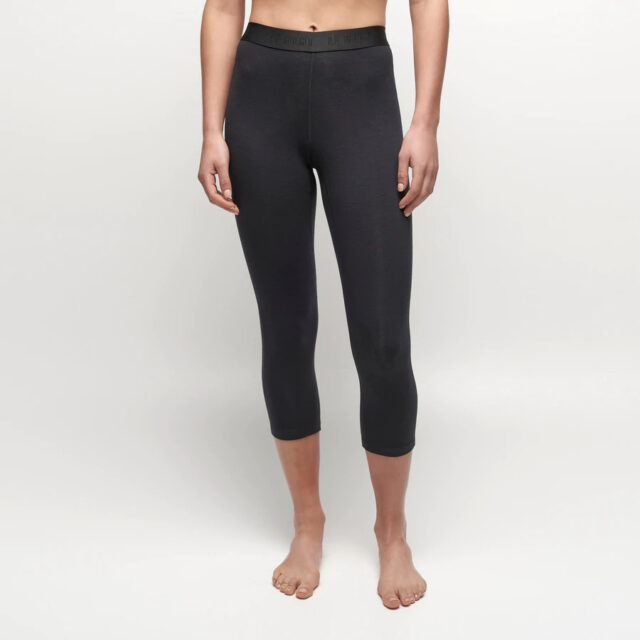
Ripton & Co. Women’s Overall
MSRP: $169
Size Tested: XS
Sascha Anastas: I would venture to say that the Ripton Women’s Overall is probably my most coveted clothing item that I have acquired over the past few years. I have been eagerly waiting for the return of denim overalls since the late 90’s, when they seem to have gone out of style overnight – and I couldn’t have been more excited to reclaim this trend with the Ripton Women’s Overall last spring, for a multitude of reasons.

The first reason is that the Ripton brand was launched from an old Ski Hotel (the infamous Skier Chalet) right down the street from the former location of my hometown ski club where I spent the majority of the 90’s (yes, in denim overalls when not in ski clothes). Second of all, the brand’s focus is “performance denim.” This means their products are designed to withhold wear and tear from playing hard in the outdoors. So in other words, Ripton made it possible for me to wear my favorite item / style of clothing while partaking in my favorite things – skiing and riding my bike — while staying cool and trendy enough to wear every day out and about.
This Overall consists of a really soft yet very stretchy denim (80% Cotton / 14% Polyester / 4% Nylon / 2% Elastane). They also feature deep pockets at the hip that have super soft mesh lining so they don’t add bulk in the hip area but still remain quite functional such that I can keep my mobile device in this pocket. My favorite feature is the 1 ½ inch thick elastic straps that have a durable and secure yet stylish plastic clasp. Unlike the overalls of years past, these overalls accommodate a more female-friendly cut / style most noticeable around the hips and thighs that make for a more flattering fit. I would say the XS is true to size, even in length. I found that the tapered cut, especially at the ankles, only scrunched minimally and the cuffs were easy to roll up once. I usually wear a fairly thin baselayer (usually wool or Patagonia Capilene) long sleeve top with the overall, which feels pretty snug. That said, it may be a good idea to size up if planning on wearing the overall with a thicker flannel or sweatshirt top.
I acquired these in the Spring of 2021 in the Cabinwash Denim. The current wash available is the Drift Wash. The stretchy denim is really easy to move in, and do just about any activity possible. In the late fall when the temperature dropped, I tended to wear my Ripton Overall instead of riding in my technical pants or baggy bike shorts with leg warmers since the Ripton Overalls were much more comfortable. I have yet to ski in them, but I plan on taking them to the slopes here very soon. Of note here is that, despite wearing these in some pretty muddy conditions, the denim didn’t tend to stain easily. I did have to use stain-remover a few times to remove some stubborn areas, but most have come out after a single wash cycle.
One thing I will say here is their price point can be a little intimidating. But considering that Ripton is a homegrown operation that came about just moments before the Covid-19 pandemic took hold of the world (likely causing supply / inventory hiccups), and the quality of their products, I can justify the price tag. Most recently Ripton came out with a Women’s Winterall and I can’t wait to expand my overall collection to include this newest option, so stay tuned.
Outdoor Research Women’s Coldfront Down Hoodie
MSRP: $229
Kara Williard: The Gunnison Valley is a notoriously cold place, and while I have a wide array of down jackets and insulted layers, this season the Outdoor Research Coldfront Down Hoodie has stood out the most. It features 700+ fill down and OR states it’s responsibly sourced down. The exterior fabric is a 53% recycled ripstop that I have found to be exceptionally durable and quite weather-resistant, especially when it comes to wind. For this reason, this isn’t the most breathable down jacket I have, but it is certainly the warmest.
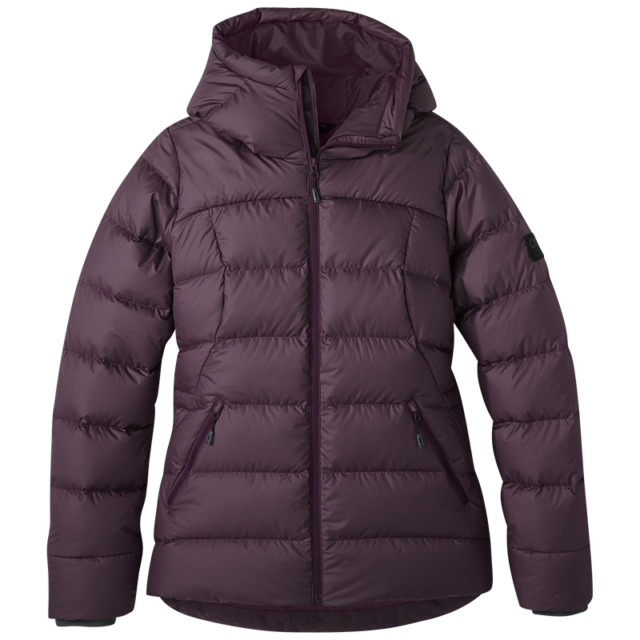
I have been testing this jacket in a Small, which is pretty unheard of for me since I tend to wear mostly Mediums and the occasional Large (5’9”, 167 lbs.). But I have been pleased with the Coldfront Down Hoodie in a Small since it has a long cut in the torso and sleeves. Given that it runs pretty long and big, sizing down doesn’t seem unreasonable unless you prefer a really roomy fit for layering. It’s a pretty bulky jacket to be layering much beyond 1-2 layers underneath, but it also fits close to my frame, making it comfortable to put a shell on top of. I have found myself picking this jacket pretty consistently for any cold morning / evening and find it to be really cute and functional for activities after skiing. It isn’t the most packable, but for as warm and fluffy as it is, it’s still a relatively packable layer that I know I can count on for reliable warmth. While I would put this more in the category of a lifestyle down jacket, rather than a technical one due to its weight, I have found myself packing it on a couple of cold days in the backcountry, including a freezing day standing in snow pits for my AIARE 2. I am not opposed to bringing it along for some big days in the mountains in freezing temps, but I would likely gravitate towards something a little more packable and lightweight.
SKHOOP Long Down Hoodie
MSRP: $239
- Face Fabric: 100% nylon mini ripstop
- Insulation: Bluesign® Responsible Down Standard 90/10 down/feather, 600 fill power
- Lining: 100% nylon mini ripstop
- Blister Measured Weight: 371 g
- Back Length: 38”
- Reviewer: 5’8”, 125 lbs
- Size Reviewed: Medium

Kristin Sinnott: SKHOOP discontinued the Long Down Hoodie for a few years, much to my disappointment, but thankfully they brought back this ‘staff favorite.’ I’ve been wearing mine for over 2 years and it is my go-to long down jacket. Winter temps in Northern New Mexico, where I spend most of my time, are fairly mild (our average winter low is between 17 and 25℉), and very rarely do we see temps in the single digits. While the majority of my winter is spent in Northern New Mexico, I still love wearing long down jackets, especially lightweight ones. The Long Down Hoodie is the perfect jacket for Taos and Santa Fe as it is fairly thin and can be worn for temps between 0 to 40 ℉, depending on how you layer.
The 600 fill power of the Long Down Hoodie is designed to be warm but not bulky and I’ve found it to be an ideal jacket for mild winters. It also makes a great travel jacket since it packs down nicely. When I plan to work up a little bit of a sweat on a cold day, the Long Down Hoodie works great because it doesn’t cause me to overheat. This is my go-to jacket for morning walks around town or just down the road when the temps are around 20 degrees.
The Long Down Hoodie is a fairly lightweight and versatile down jacket. The baffles are narrower at the elbows and lower back, which gives the jacket a more fitted look and better mobility in the elbows. The two-way zipper allows for good mobility and the two hand pockets and internal chest pocket provide adequate storage. I can’t recommend this jacket enough for anyone looking for a long but somewhat lightweight down jacket.
Mammut Broad Peak IN Hooded Jacket
MSRP: $299
Dylan Wood: A nice down jacket is a very crucial component of my everyday commute. My day starts down in Gunnison, where it is typically anywhere from -20º to 30º F (-29º to -1º C). I usually have to wait outside in these temps for 5-10 minutes, then I immediately hop onto a bus that is usually around 70º F (21º C). I then get off the bus and am back walking in the cold again for a few minutes until I get into the warm Blister HQ at Elevation Hotel. Layering up for the cold is very impractical because of how hot it is on the bus, but not dressing warm enough makes waiting and walking in the cold miserable.
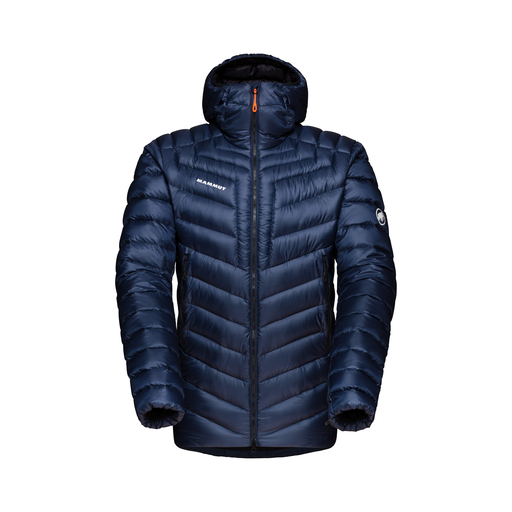
This is where a warm, packable, standalone, down jacket comes in handy. The Mammut Broad Peak IN Hooded Jacket is warm enough for me to tolerate these frigid temperatures that Gunnison is known for, and I really enjoy that it is all I need to wear on those especially cold days. Before hopping on the bus, I reach into the convenient chest pocket, out goes my mask, in goes my glasses, and it then packs down very nicely into my pack. Speaking of backpacks, the Broad Peak IN Hooded Jacket’s zippered hand pockets are situated so that you can wear a backpack with a hip belt or a climbing harness with the jacket on and still access these pockets. To be honest, it took a couple days to get used to the fact that these pockets are higher up than most of my other jackets. But now it feels completely natural and I am enjoying the ability to access my gloves in my pockets before riding my bike home from the grocery store with a fully cinched-down backpack.
It is also worth mentioning the fit of the Broad Peak IN Hooded Jacket. Fit is quite crucial with down jackets. Too big, and cold air will creep into the voids under your jacket. Too small, and the jacket won’t be comfortable and/or won’t fully cover your lower torso, head, and wrists. I am 5’10”, 155 lbs, and I have found that the Medium size has been perfect for me. Its elastic cuffs, elastic border of the hood, and drawstring around the waist have all kept the jacket nice and snug around my body, while the overall fit has not been restrictive whatsoever.
Don’t get me wrong, I am still very much looking forward to doing things like belaying early morning climbs, skinning out before dawn to beat wet slides, and hanging out on the windy summits of 14ers in the Broad Peak IN Hooded Jacket, and there’s no indication that this jacket won’t be ideal for all of those things. However, I think the biggest surprise so far has been just how useful this jacket has become in the not-so-exciting parts of my daily life, and you don’t have to be a mountaineer for it to be very nice to have around.
Wells Lamont Hydrahyde Working Crew Lobster Mitts
MSRP: $59.99
Luke Koppa: I tend to go through a pair of gloves / mitts just about every season. Some last a bit longer than that and some a bit less, but few pairs I’ve used last more than ~100 days of daily use each winter. So, when it came time to replace my previous pair (Leki Copper S Lobster, which lasted 150+ days), I figured I’d try something new.
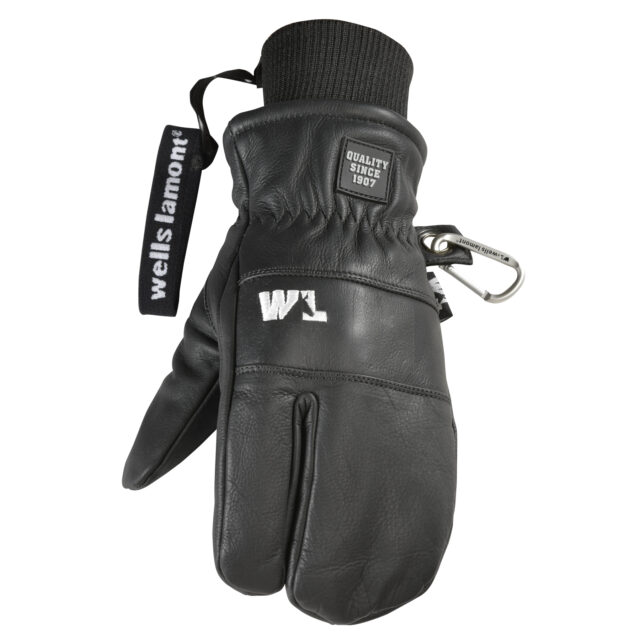
I prefer the look and warmth of mittens, but I also spend a lot of time pointing a camera at our other reviewers, so a lobster / 3-finger cut has become my go-to choice for the bit of added mobility / precision. I was already familiar with Wells Lamont, given that they sponsor a ton of great skiers, events, and videos, and I knew they had a reputation for being a pretty good bang for the buck. So I swung by Butte & Co., right above Blister HQ, and figured I should give their lobster mitt a try.
At this point, I think I’ve probably put about 70-80 days in these mitts, and I’m a big fan overall. For the price, the fit is well executed, and I love that there are some sewn-in finger slots on the inside of the mitt, which greatly improve dexterity in my experience, without the potential to accidentally pull the liner inside-out when removing your hands (which is one of my biggest pet peeves in the world).
One of my main priorities for ski mitts / gloves is that they are (1) primarily made of leather and (2) do not feature a waterproof / breathable membrane. Here in Colorado, I’m very rarely dealing with super wet snow or rain, so I don’t need a waterproof glove and I’d much rather get the added breathability of something that’s not totally waterproof. As for full leather, well, I just find that it holds up better in the long run. So far, these Wells Lamont mitts have done a decent job of keeping my hands dry in the Colorado snow, and a far better job of keeping them dry in warm springtime temperatures, relative to waterproof alternatives. I rarely get super cold hands and these seem about par for the course in terms of warmth for a middle-of-the-road mitten — my fingers will sometimes get cold in them when it gets below about 10-15°F.
One of the bigger surprises with these mitts was how supple the leather was from the start. I had expected a stiff, Kinco-esque feel, but these Wells Lamont mitts aren’t much less supple than Hestra gloves I’ve used that cost double or triple.
I also like that these Wells Lamont mitts come with retention straps, though they lack any sticky silicone gripper on said strap, so I have to be a bit more careful about just dropping my mitts, since the strap can sometimes ride up onto the wrist of the glove, rather than my actual wrist.
All in all, I’ve been very happy with these mitts and will continue to wear them until I manage to put some big holes in them. At this point, there aren’t any noticeable wear areas showing, so I expect them to at least get me through half of next season.
Women’s Gordini Gore-Tex Down Mitt
MSRP: $99.99
Size Tested: Small
Sascha Anastas: It is quite rare for me to leave the house during winter months without a package of hand warmers stashed in my pockets– but ever since finding the Gordini Gore-Tex Down Mitts, for the most part I have happily left my hand warmers behind. The 600 goose-down fill (75% goose down and 25% goose feathers) insulation had no problems keeping my hands warm even on the coldest of days this winter. More often than not, heavy, down mittens tend to be bulky and lack dexterity. But for as much insulation as these mitts offer, they felt sleeker than most other heavy/down mitts I have worn in the past. Overall, they didn’t feel too cumbersome to wear most days skiing regardless of the temperature.

These mitts are very cozy. They feature a breathable stretchy shell with patches of genuine goatskin on the fingers and a tackier nylon material on the palm to maximize grip. The cuff lining consists of a super soft black faux fur which makes it fairly easy to get the mitts on and off and is secured with a ½ inch nylon/velcro cinch. I tend to be pretty picky about cuffs as I am adamant about wearing my glove/mitt cuffs underneath my jacket cuff and if the cuff of the glove or mitt is too thick, it makes it really hard to pull underneath my jacket sleeve cuff and frankly just really uncomfortable. The cuff on this mitt is longer than I prefer, but the material is on the thinner side so it was fairly easy to pull into my jacket sleeve cuff and wasn’t overwhelming to get under my jacket cuff.
I felt that the sizing was accurate. I opted for size Small and I did find that the mitt was slightly long in the finger compartment, but I have pretty small hands so this was not all that surprising and in women-specific gloves, I usually wear a size small, so I would say the mitt is true to size.
Even though these mittens were plenty warm, I also found that my hands didn’t tend to overheat or retain moisture inside. We don’t necessarily have super wet conditions here in Colorado, but I definitely appreciate the windproof/waterproof insert as my poor circulation needs as much protection as possible from the elements. To that end, there is also a zippered pocket on the back of the mitt for those coldest of cold days to store some beloved hand warmers.
Glade Switch Beanie
MSRP: $24
Luke Koppa: Long story short: I have a big head (about 60 cm / 24 in circumference), tend to wear a beanie just about every day of the winter, but have a very hard time trying to find beanies that actually fit. The Glade Switch beanie is just a basic acrylic beanie, but it happens to fit my big dome just about perfectly, and it’s really soft, so I’ve literally worn it every day since the Blister Summit. Big fan.

Clary Collection Face Serum
MSRP: $48.00 (30 mL / 1 oz. bottle)
Sascha Anastas: The Clary Collection Face Serum has recently come to my rescue after I suffered mild frost-nip on my nose during the Blister Summit a few weeks ago. Since then, I have been remedying this area of my nose with the Clary Collection Face Serum. Clary Collection is a small home-grown, women-owned company out of Nashville, TN. Per their website, all Clary products are based on the traditional oil infusion process in which the herbs are steeped and combined with unrefined pressed Jojoba oil. Clary’s products include an All-Purpose Balm (their signature product), the Face Serum, Body/Hair Oils, along with a few specialty botanically rich soap bars. All ingredients that go into their products are organic and certified by MADE SAFE® which ensures that the product is made from non-toxic products.
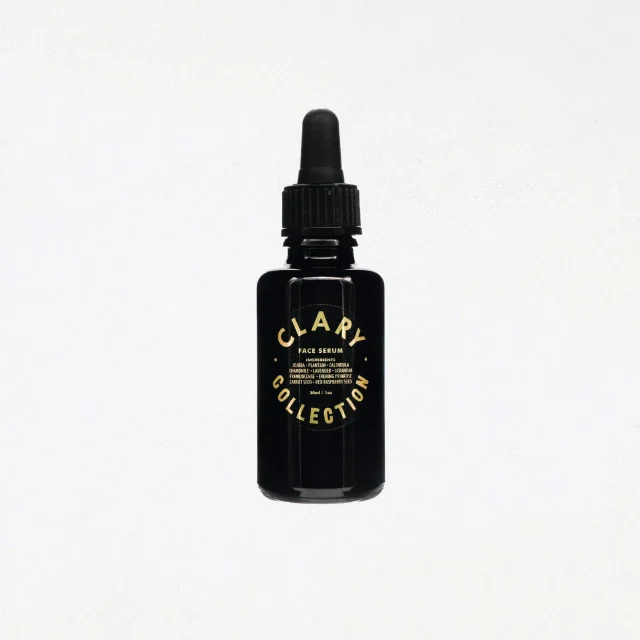
This specific Face Serum consists of organic Jojoba oil that is infused with plantain leaves, chamomile, lavender, calendula flowers, and over five other antioxidant and anti-inflammatory essential oils. What this means is that the serum smells really really good, which is a critical thing considering that I was directly applying this to the tip of my nose multiple times a day. Admittingly, I was a bit nervous to directly apply an oil onto my face in lieu of a cream-based product, but I actually found that the oil tended to balance my dry skin far better than any other face cream or emollient I had tried in the past, to the point that after a few days of just using on my battered nose, I ended up applying the serum to my entire face. I now use this as my everyday face moisturizer and on most days apply it before my sunscreen. Clary does have another product called the Renew & Repair Oil for scarred or sun-damaged skin, which might actually be a better product for treating injured / weathered skin spots on the face such as my nose so I would be curious to see how this compares to the Face Serum. The price point for their products seems to be reasonable, especially considering the quality of ingredients that go into the products. Price points range from $8.50 (for a small 0.5 oz container of their signature balm) to this Face Serum which is their most expensive product at $48. Since I use only a few drops each application, I am pretty confident this serum will last me the rest of the year and at that point, I am certainly planning on replenishing my supply of this product and am curious to see how all the other balms/oils compare.
Spark R&D Fixie Clips
MSRP: $39
Jed Doane: The Fixie Clips are Spark’s simplest splitboard clips. They have no moving parts and are made from a single piece of aluminum. I tried them on my Venture Storm Carbon after using Spark’s high-tech Crossbar clips, which feature a swinging arm and levers to maximize tightness. The transition experience with the Fixie clips is unsurprisingly much easier than with Crossbar Clips or Karakoram Clips, and is much less prone to disastrous breaks in the backcountry. I found the board hold to be better than Voile Hooks or Phantom’s Hercules Hooks, and used the adjustable tightness to dial in the fit over a few tours. For those seeking simplicity, durability, and dependability in a lightweight splitboard hook, the Fixie Clips are a great affordable choice.
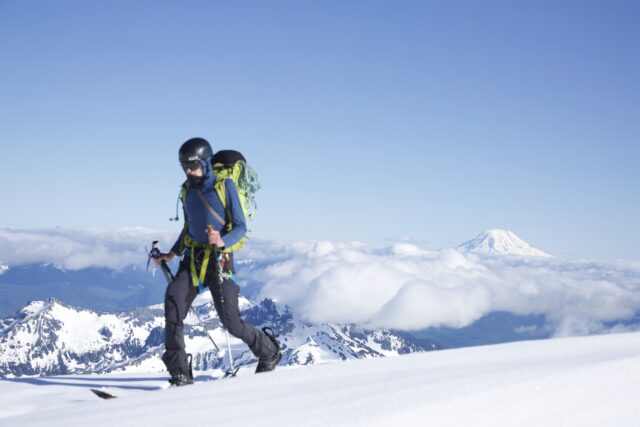
Swiftwick Flite XT Trail Five
MSRP: $27.99
Gordon Gianniny: I’ve said it before and I’m gonna say it again — good socks are totally underrated. If they’re working well, you barely notice you’re wearing them. But if you end up with a bad pair, blisters, hotspots, and general discomfort are kind of inevitable in my experience. My go-to sock for the last couple of years has been the Swiftwick Flite XT, but the brand’s new Flite XT Trail is making a strong bid to take over that title.
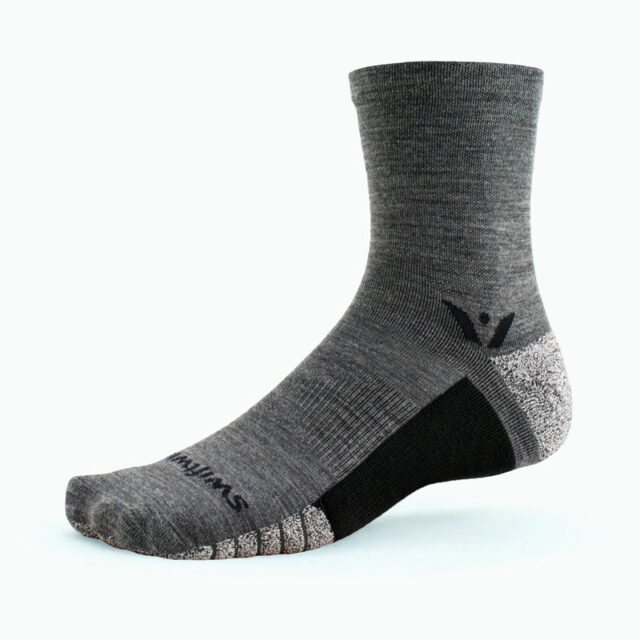
The Flite XT Trail has all the same features as the regular Flite XT — GripDry fibers in the heel and toe to keep your feet from sliding around in the shoe, extra elastic around the ankle for additional support, and moisture-wicking Olefin fibers in the footbed for blister prevention — but uses a Merino wool blend in place of the synthetic fabric used in the Flite XT. In my experience, that gives the Flite XT Trail slightly more cushioning than the Flite XT and also improves versatility in colder temperatures. The Flite XT is a great summer sock but it’s pretty thin, so I often find my toes getting a little cold when I wear the Flite XT in the winter months. The slightly thicker Merino wool fabric used in the Flite XT Trail provides just enough extra warmth to stave off frozen toes in the winter without being too thick / insulated for use in warmer weather. If you’re a sock nerd like me, I’d highly recommend giving the Flite XT Trail a closer look. Swiftwick also makes a shorter cut Flite XT Trail Two ($23.99) if you prefer shorter socks.
Ibex Wool Aire Hoodie
MSRP: $285
Jed Doane: This new offering from Ibex, built around ultralight merino wool insulation, has quickly become my everyday insulator. It’s a midweight piece that’s quite versatile — breathable on its own while still cutting wind, warm under a shell, and comfortable in a variety of temperatures. It definitely has what I’d call an “athletic” fit — I wear the size Medium and have found the sleeves to be long enough (I’m 6’2”, ~165 lbs).
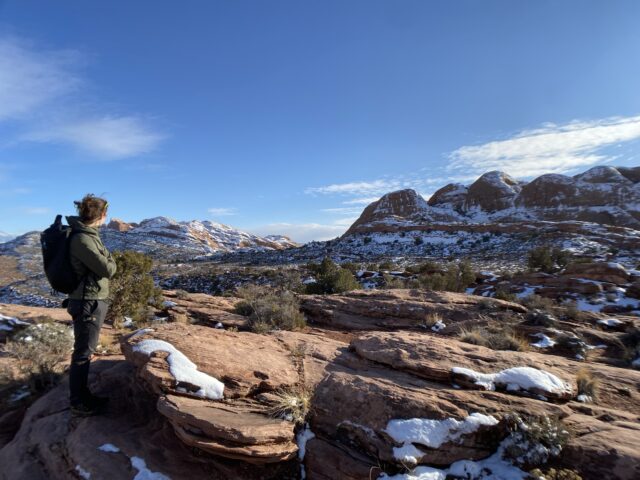
It saves weight through a non-adjustable elastic hem and hood, but is otherwise quite full-featured with zippered chest and side pockets. I also like the subtle double zipper pulls, which lay flat and low-profile but seem to be easier to grab when I’m fumbling around with gloves. The 20D face fabric is tougher than that of the Patagonia Nano Air and North Face Ventrix (which, in my experience, are easily damaged by a thorn or branch on the trail), and hasn’t shown any signs of wear from pack straps or ski edges after a few months of hard use.
It’s as breathable as my The North Face Ventrix Hoodie, but significantly more packable. The inner lining is as soft as other “active insulation” pieces. My size M weighs in at a paltry 323 grams and packs down into its own pocket. Overall, it’s a highly breathable insulator that’s comfortable and packable without the “crinkle” of other ultralight jackets.
Outdoor Vitals Ventus Active Hoodie
MSRP: $179.97
Gordon Gianniny: I’m a believer that no one can ever have too many lightweight insulated midlayers, so I was pretty psyched to get my hands on the Outdoor Vitals Ventus Active Hoodie. Outdoor Vitals is a relative newcomer to the world of ultralight outdoor gear, but they definitely know what they’re doing when it comes to putting together a functional, versatile jacket. The Ventus Hoodie has lightweight synthetic insulation with a windproof shell, close-fitting hood, and quarter-zip closure to reduce weight. It also has a couple of nifty bonus features, namely thumb loops to keep the sleeves from riding up, a hidden inner pocket that you can stuff the jacket into for easier packing, and armpit vents for extra breathability.
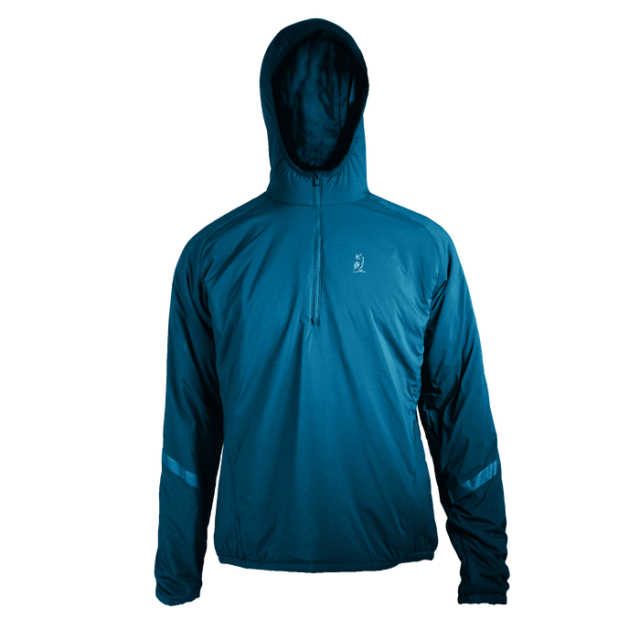
The Ventus is also stupidly light, coming in at 7 oz for a men’s Medium. For comparison, my other go-to lightweight puffy, the Patagonia Micropuff, weighs in at 264 g / 9.3 oz. The Ventus is simple, and it’s awesome. Outdoor Vitals markets the Ventus as an ultralight backpacking layer, but I’ve been digging it for all kinds of things. It makes a great midlayer for cold days of backcountry skiing, and it’s warm enough to work well as an outer layer for around town use on days in the 30s F. It isn’t quite as warm as the Patagonia Micropuff, but it’s pretty darn close — which is impressive for how much lighter it is.
To make things even better, the Ventus has a fit that I find ideal for active, outdoor use — as a tall skinny person with long arms, I’m constantly frustrated by jackets with overly roomy bodies and / or short arms. The Ventus fits closely while still leaving space for layers underneath, and the arms are plenty long. For reference, I’m 6’2” and ~155 lbs, and I tested a men’s size Medium. For someone who already has a silly amount of lightweight insulated jackets, I’ve been surprised by how frequently I find myself reaching for the Ventus over all my other options — and it’s not even backpacking season yet! Whether you’re on the hunt for “one midlayer to rule them all” or just looking for another awesome lightweight layer to add to the collection, I’d definitely recommend giving the Ventus a try.
